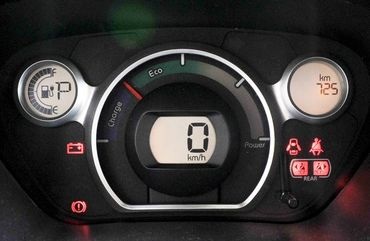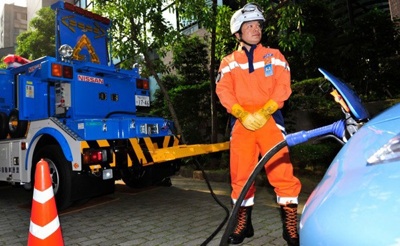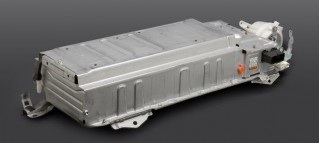
AMPTRAN Motor Corporation
Advanced Vehicle Testing Lab
|
The PROBLEM: For today's electric vehicles that run on lithium-ion batteries and one of the biggest downsides is the limited range between recharging.
Lightweight batteries that can deliver lots of energy are crucial for improving the range of electric cars. For that reason, even modest increases in a battery’s energy-density rating — a measure of the amount of energy that can be delivered for a given weight — are important advances. A lithium-ion battery is a family of rechargeable battery types in which lithium ions move from the negative electrode to the positive electrode during discharge, and back when charging. Lithium-ion batteries are common in consumer electronics. They are one of the most popular types of rechargeable battery for portable electronics, with one of the best energy densities, no memory effect, and a slow loss of charge when not in use. ADVANTAGES OF LITHIUM ION BATTERY: * Wide variety of shapes and sizes efficiently fitting the devices they power. DISADVANTAGES OF LITHIUM ION BATTERY * Charging forms deposits inside the electrolyte that inhibit ion transport. Over time, the cell's capacity diminishes. The increase in internal resistance reduces the cell's ability to deliver current. This problem is more pronounced in high-current applications. * High charge levels and elevated temperatures (whether from charging or ambient air) hasten capacity loss. Charging heat is caused by the carbon anode (typically replaced with lithium titanate which drastically reduces damage from charging, including expansion and other factors). * A Standard (Cobalt) Li-ion cell that is full most of the time at 25 °C (77 °F) irreversibly loses approximately 20% capacity per year. Poor ventilation may increase temperatures, further shortening battery life. Loss rates vary by temperature: 6% loss at 0 °C (32 °F), 20% at 25 °C (77 °F), and 35% at 40 °C (104 °F). When stored at 40%–60% charge level, the capacity loss is reduced to 2%, 4%, and 15%, respectively. * The internal resistance of standard (Cobalt) lithium-ion batteries is high compared to both other rechargeable chemistries such as nickel-metal hydride and nickel-cadmium, and LiFePO4 and lithium-polymer cells. Internal resistance increases with both cycling and age. Rising internal resistance causes the voltage at the terminals to drop under load, which reduces the maximum current draw. Eventually increasing resistance means that the battery can no longer operate for an adequate period. * To power larger devices, such as electric cars, connecting many small batteries in a parallel circuit is more effective and efficient than connecting a single large battery. * Safety requirements: If overheated or overcharged, Li-ion batteries may suffer thermal runaway and cell rupture.In extreme cases this can lead to combustion. Deep discharge may short-circuit the cell, in which case recharging would be unsafe. To reduce these risks, Lithium-ion battery packs contain fail-safe circuitry that shuts down the battery when its voltage is outside the safe range of 3–4.2 V per cell. When stored for long periods the small current draw of the protection circuitry itself may drain the battery below its shut down voltage; normal chargers are then ineffective. Many types of lithium-ion cell cannot be charged safely below 0°C.
(Lithium Ion Battey Pack in Toyota Prius 2010)
(Toyota Prius was burned due to the lithium ion battery explosion caused by extreme heat) These safety features increase costs compared to nickel metal hydride batteries, which require only a hydrogen/oxygen recombination device (preventing damage due to mild overcharging) and a back-up pressure valve.
View the SOLUTION
|
|---|
Copyright © 2011-2021 Lithium Air Industries-. All rights reserved. |








